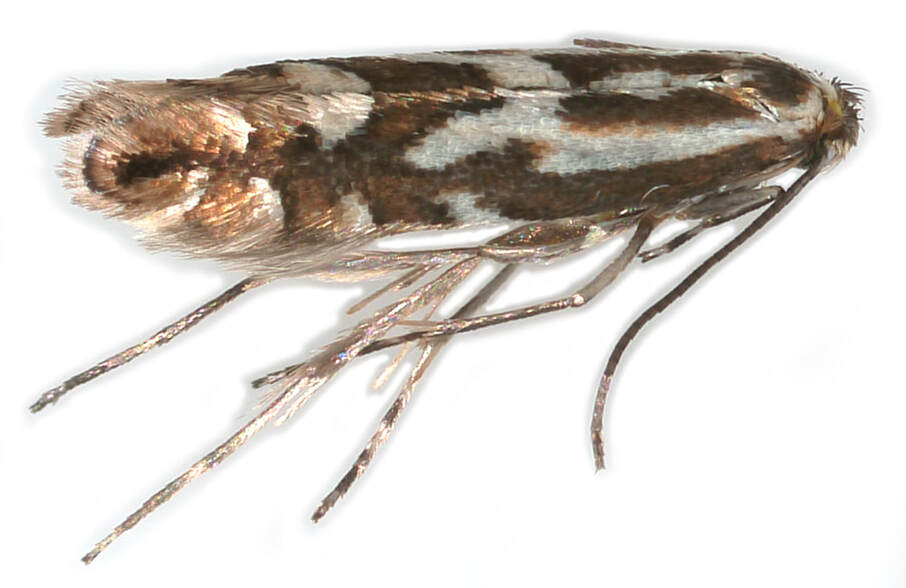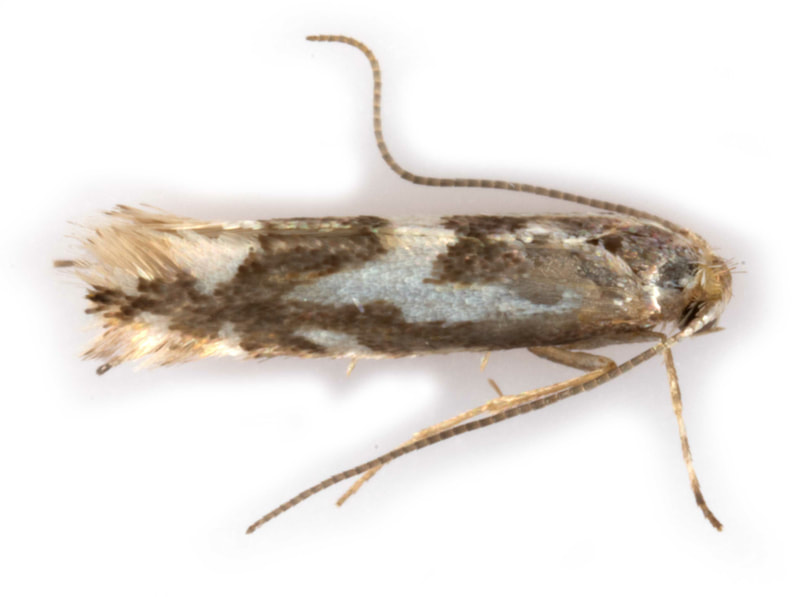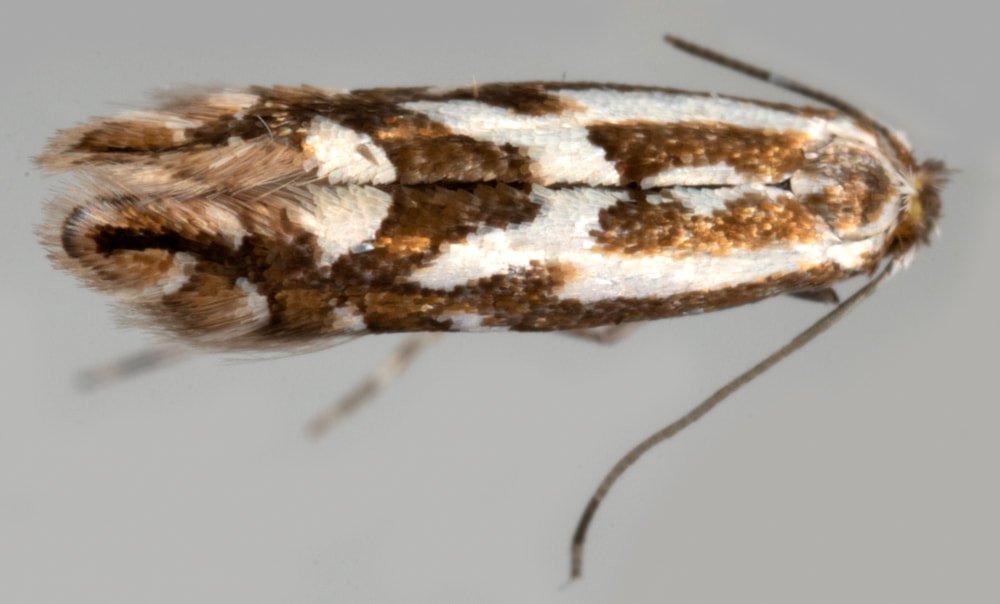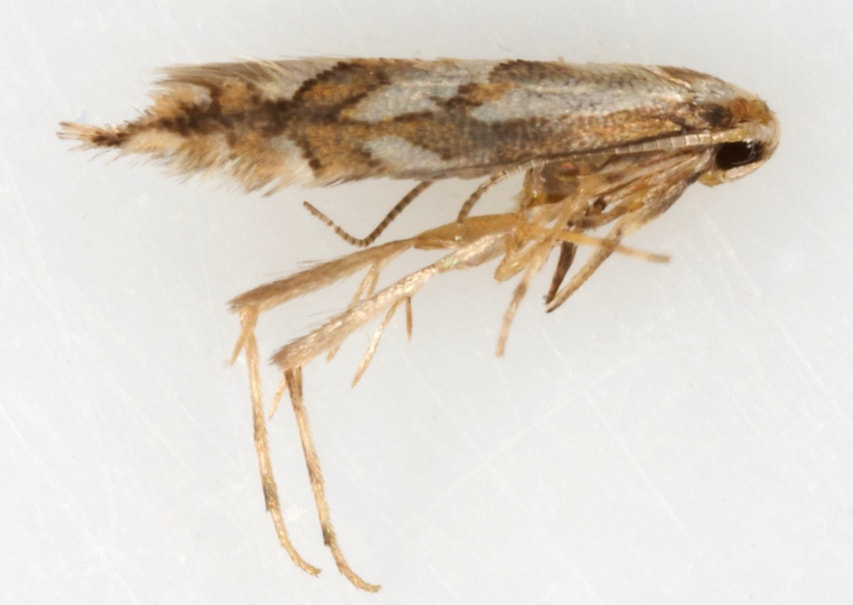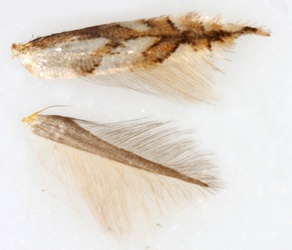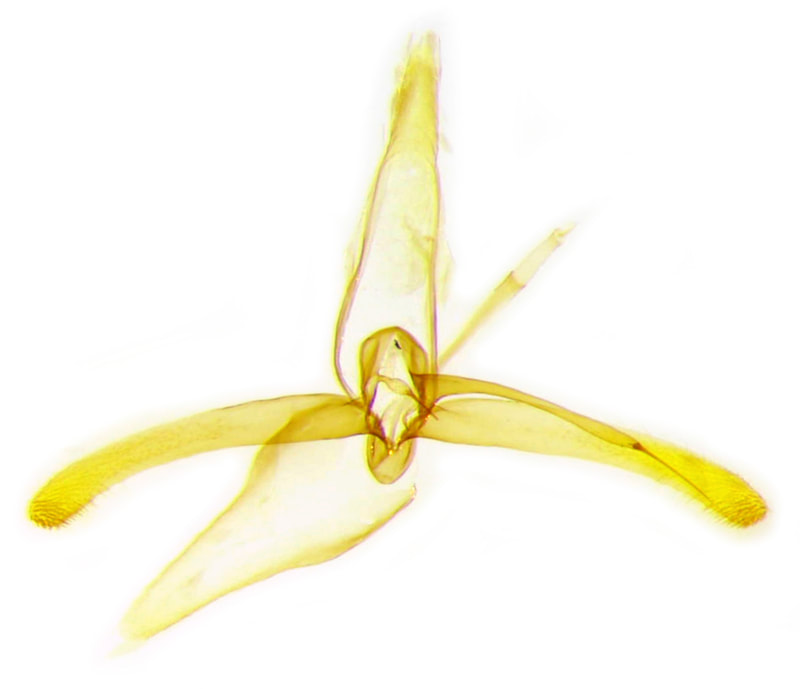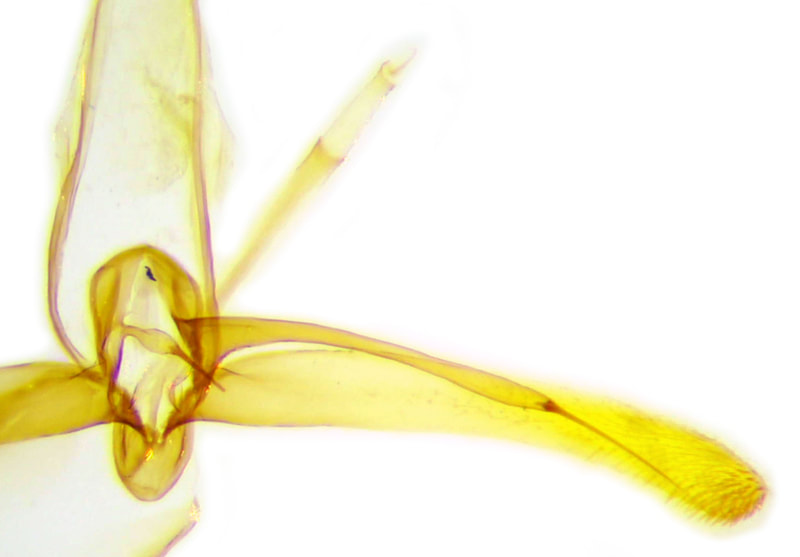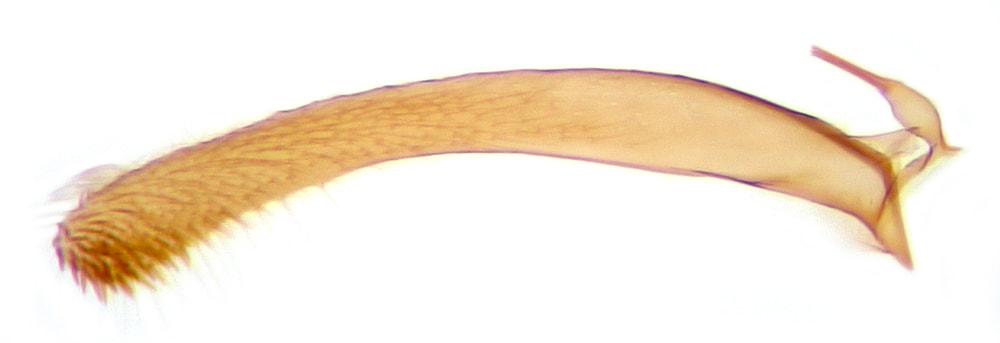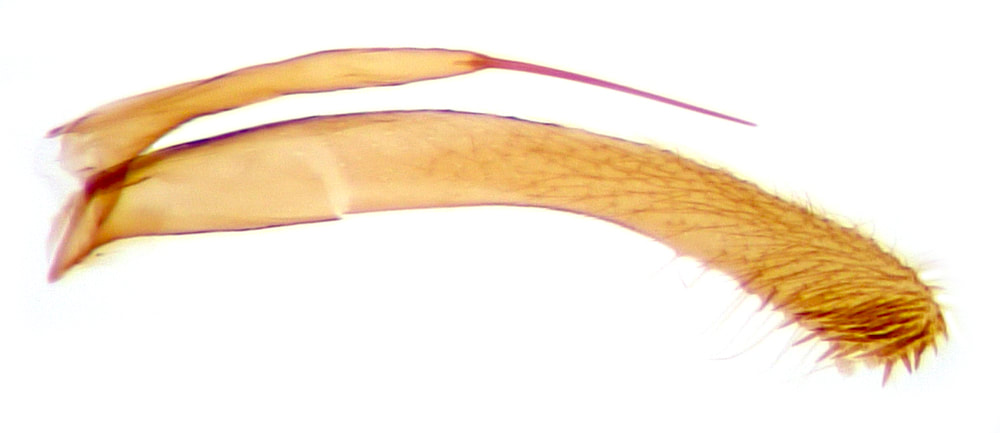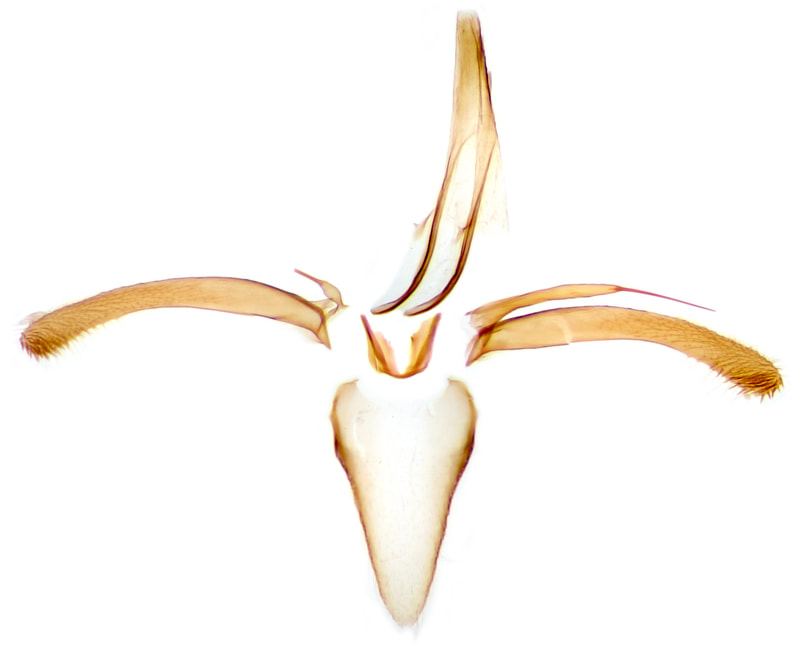15.046 Phyllonorycter blancardella (Brown Apple Leaf-miner)
ws: 6.0-8.5mm; bivotine May, Aug, apple (Malus spp); common in S&C.England and Wales, local in N.England and S.Scotland
ID: Key: ground colour of fw not white or light grey (difficult to determine in a specimen that is half white and half coloured, but in the species keyed from ground colour white or grey either the ground colour clearly predominates over the darker markings or there is no white basal streak);
fw without any distinct transverse fasciae ("distinct' should be interpreted to mean that at least one transverse fascia is separated from other fasciate or strigulate markings by a complete band of ground colour - in practice this does not work well for some species keyed as having a distinct fascia);
thorax without a lighter median line; fw without darker hook in apical cilia (MBGBI2 makes much of the presence and form of markings in the apical cilia. Very fresh specimens are required to have any chance of determining this feature. 3 species leading from possession of a dark hook have narrow white strigulae in a predominently coloured fw, the 4th, ulmifoliella, has a complete distinct fascia!); thorax not leaden metallic; fw with 4 clearly defined costal strigulae (not 5); strigulae edged with black scales > 9 species with a similar fw pattern.
For the purposes of excluding these species in the identification of specimen §1 >
P.rajella has costal strigula 1 ending distal to dorsal strigula 1
P.strigulatella and P.lantanella have a narrow white basal streak clearly edged in black
P.junoniella has dorsal 1 clearly narrower than the coloured mark separating it from dorsal 2 and dorsal 1 has a more tapered apex
P.hostis and P.sorbi have ws >8mm; P.oxyacanthae, P.blancardella and P.mespilella ws <=8mm but these 5 best distinguished by genital examination.
In males this depends on identifying the costae of the valvae. These are asymmetric, the right being longer than the left, and have spines at their apex.
In considering relative lengths of the costa measurements are taken from drawings in MBGBI2 and are measured from base of costa to base of its spine.
P.sorbi has the R costa only slightly longer than the L (1.1-1.2x).
P.oxyacanthae has the R costa much longer than the L (2.5x) and a strongly hooked spine.
P.hostis has the R costa much longer than the L (2x) and a short curved/hooked spine (spine ~1/4 length of costa).P.mespilella has a stout R costa with a long apical spine (spine ~1/2 length of costa) and a very short L costa with a long spine (spine 2x length of costa).P.blancardella has a narrow R costa with a long apical spine (spine 2/5 length of costa) and a very short L costa with a long spine (spine 2x length of costa).
fw without any distinct transverse fasciae ("distinct' should be interpreted to mean that at least one transverse fascia is separated from other fasciate or strigulate markings by a complete band of ground colour - in practice this does not work well for some species keyed as having a distinct fascia);
thorax without a lighter median line; fw without darker hook in apical cilia (MBGBI2 makes much of the presence and form of markings in the apical cilia. Very fresh specimens are required to have any chance of determining this feature. 3 species leading from possession of a dark hook have narrow white strigulae in a predominently coloured fw, the 4th, ulmifoliella, has a complete distinct fascia!); thorax not leaden metallic; fw with 4 clearly defined costal strigulae (not 5); strigulae edged with black scales > 9 species with a similar fw pattern.
For the purposes of excluding these species in the identification of specimen §1 >
P.rajella has costal strigula 1 ending distal to dorsal strigula 1
P.strigulatella and P.lantanella have a narrow white basal streak clearly edged in black
P.junoniella has dorsal 1 clearly narrower than the coloured mark separating it from dorsal 2 and dorsal 1 has a more tapered apex
P.hostis and P.sorbi have ws >8mm; P.oxyacanthae, P.blancardella and P.mespilella ws <=8mm but these 5 best distinguished by genital examination.
In males this depends on identifying the costae of the valvae. These are asymmetric, the right being longer than the left, and have spines at their apex.
In considering relative lengths of the costa measurements are taken from drawings in MBGBI2 and are measured from base of costa to base of its spine.
P.sorbi has the R costa only slightly longer than the L (1.1-1.2x).
P.oxyacanthae has the R costa much longer than the L (2.5x) and a strongly hooked spine.
P.hostis has the R costa much longer than the L (2x) and a short curved/hooked spine (spine ~1/4 length of costa).P.mespilella has a stout R costa with a long apical spine (spine ~1/2 length of costa) and a very short L costa with a long spine (spine 2x length of costa).P.blancardella has a narrow R costa with a long apical spine (spine 2/5 length of costa) and a very short L costa with a long spine (spine 2x length of costa).
§1 Westliff-on-sea, Essex; 25/08/2009; male; fw 3.3mm
§2 Westliff-on-sea, Essex; 21/05/2018; male; fw 3.3mm
§2 Callestick, Cornwall; ??/04/2023; male; fw 4.1 (specimen provided by Tony Wilson)
All images © Chris Lewis
§2 Westliff-on-sea, Essex; 21/05/2018; male; fw 3.3mm
§2 Callestick, Cornwall; ??/04/2023; male; fw 4.1 (specimen provided by Tony Wilson)
All images © Chris Lewis
Page published 24/11/2013 (§1) | §2 added 07/03/2019
